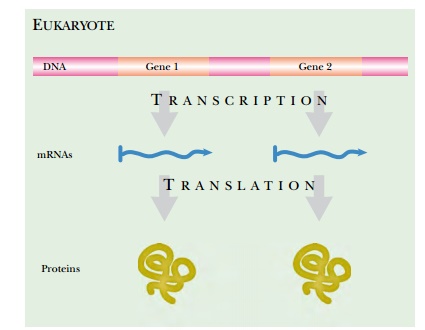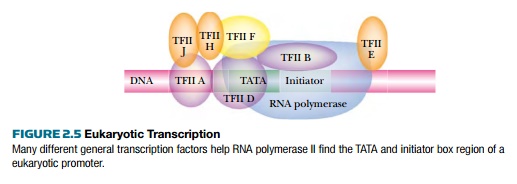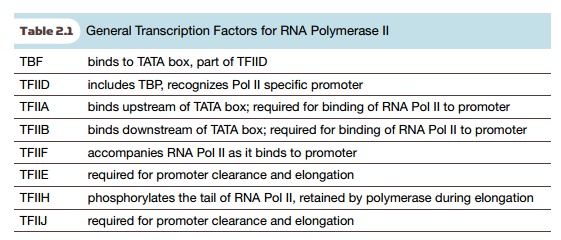Chapter: Biotechnology Applying the Genetic Revolution: DNA, RNA, and Protein
Eukaryotic Transcription Is More Complex
EUKARYOTIC
TRANSCRIPTION IS MORE COMPLEX
Several differences between
eukaryotic and prokaryotic transcription occur because eukaryotic cells are
more complex. The simple fact that eukaryotic mRNA is made in a nucleus makes
the process more involved than bacterial transcription, but this is only one of
the differences.
In contrast to the single RNA
polymerase in prokaryotes, eukaryotes have three different RNA polymerases that
each transcribe different types of genes. RNA
polymerase I transcribes
the eukaryotic genes for
large ribosomal RNA. These two rRNAs are transcribed as one long mRNA that is
cleaved into two different transcripts, the 18S rRNA and 28S rRNA. These are
used directly and not translated into protein. RNA polymerase III transcribes the genes for tRNA, 5S rRNA, and
other small RNA molecules. RNA
polymerase II transcribes the genes that encode proteins and has been
studied the most.
Starting transcription of
eukaryotic genes is more complex than in bacteria. The layout of the eukaryotic
promoter is much different. RNA polymerase II needs three different regions,
the initiator box, the TATA box, and various upstream
elements that bind proteins known as transcription
factors. The initiator box is the site where transcription starts and is
separated by about 25 base pairs from the TATA box. The upstream elements vary
from gene to gene and aid in controlling what proteins are expressed at what
time.


Many proteins are involved in
positioning eukaryotic RNA polymerase II at the transcriptional start site
(Fig. 2.5 and Table 2.1). RNA polymerase II requires several general transcription factors to
initiate transcription at all
promoters. In addition, specific
transcription factors are needed that
vary depending on the particular gene (see later discussion). The TATA binding factor or TATA box factor (TBF)
recognizes the TATA box. This factor
is used by all three RNA polymerases in eukaryotes. For RNA polymerase II, TBF
is found with other proteins in a complex called TFIID. (For the other RNA
polymerases, TBF associates with different proteins.) After this complex
binds, TFIIA and TFIIB bind
to the promoter, which then triggers the binding of RNA polymerase II. RNA
polymerase is associated with TFIIF, which probably helps it bind to the
promoter. Once RNA polymerase II has bound to the promoter, it still requires
TFIIE, TFIIH, and TFIIJ to initiate transcription. In particular, TFIIH
phosphorylates the tail of RNA polymerase II, which allows it to move along the
DNA. As RNA polymerase II leaves the promoter, it leaves behind all of the
general complexes except TFIIH.

Bacterial RNA polymerase can
function with a promoter containing no upstream elements. But in eukaryotes the
upstream elements are essential to RNA polymerase II function, and a promoter
with no upstream elements is extremely inefficient at initiating transcription.
These elements are from 50 to 200 base pairs in length and vary based on the
gene being expressed. They bind regulatory proteins known as specific
transcription factors, as opposed to the general transcription factors shared
by all promoters that use RNA polymerase II.
For example, the specific
transcription factors Oct-1 and Oct-2 proteins bind only to the Octamer
elements. Oct-1 is found in all tissues, whereas Oct-2 is only found in immune
cells. A plethora of specific factors exist that are beyond the scope of this
discussion.

Eukaryotes have three different RNA polymerases
that transcribe different genes. RNA polymerase II requires many different
proteins to transcribe a gene.
Eukaryotes require specific transcription
factors to initiate gene transcription. These are highly abundant, and each
gene has a different set of factors that regulate its transcription.
Related Topics